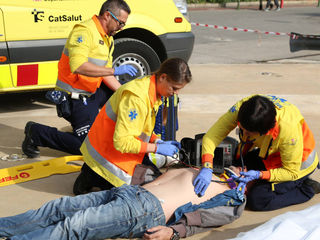

Spontaneous Ankle Pain After a Course of Antibiotics
A 62-year-old man presents with pain in the back of his right ankle. He was walking to the shops when he suddenly heard a loud ‘snap’. He...


Determinants of Success and Failure in Prehospital Endotracheal Intubation
Abstract Introduction: This study aimed to identify factors associated with successful endotracheal intubation (ETI) by a multisite...


Test: ¿qué sabes sobre la fibrilación auricular?
#lessons #protocols #learning #assesment #practicalemergenccymedicine #ICU #ALS #urgencias #shock #ECG #izaskuntfpractical


Abordaje del Shock en urgencias
Definición Disminución de la perfusión tisular sistémica y por consiguiente del oxígeno liberado a los tejidos (TO2). Inicialmente se...


Los lesionados medulares serán derivados a Vall d’Hebron
Un protocolo establece que ante un paciente con daño medular pero sin riesgo vital, el SEM ha de priorizar su traslado al hospital...


Instructors' Collection ECG of the WEEK: Complete AV Block With Junctional Escape Rhythm
This ECG is from a 78-year-old woman. We do not know any clinical details. We break from our usual habit of removing the ECG machine’s...


How Cardiopulse works
There are some different tipes of mechanical chest compression devices, the cardiopulse is one of them. Hear we can see an example of how...


Upper Limb Nerve Lesions (Part 2 – The Radial Nerve)
In Part 1 of our ‘Upper Limb Nerve Lesions’ series we learnt about the brachial plexus and the two most commonly occurring lesions...


Upper Limb Nerve Lesions (Part 1 – The Brachial Plexus)
Upper limb nerve lesions are commonly tested in the basic sciences section of both undergraduate and postgraduate medical examinations...


The Oxygenator Assessment Part 1
I’m sure by now most of you are asking what on earth the oxygenator is. To be honest, I asked it too. I had to think of a way to get you...









































